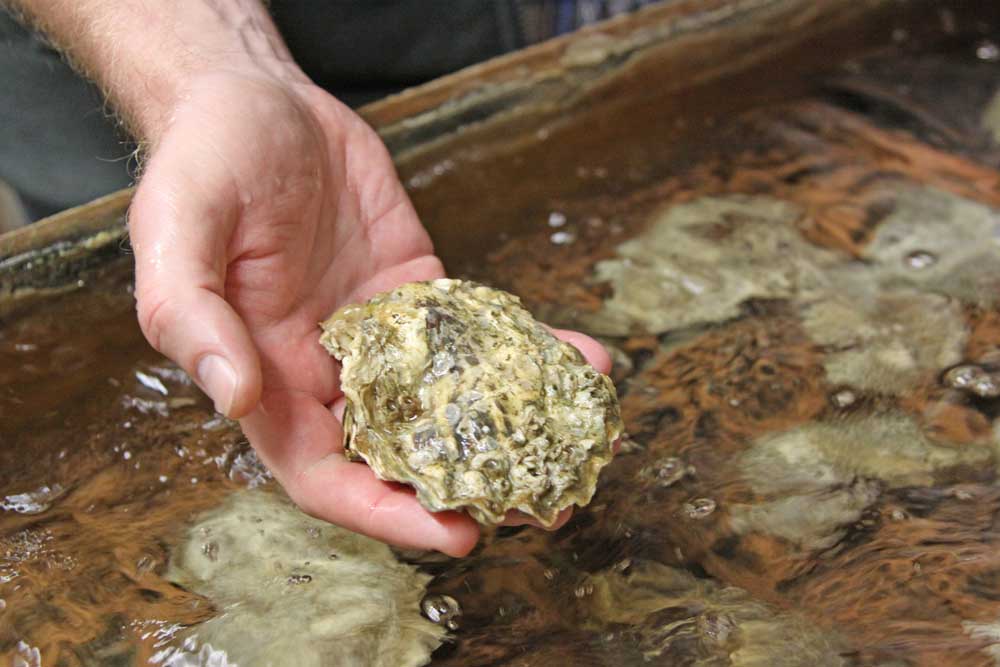Shellfish closure begins to ease
Published 10:32 am Monday, June 10, 2024

- Oysters and other shellfish in Washington and Oregon have recently been affected by a marine toxin bloom.
WILLAPA BAY — Some commercial harvest of oysters and other shellfish has reopened for parts of Willapa Bay, where a sudden surge in Paralytic Shellfish Poison (PSP) brought the important industry to a temporary halt in late May.
Trending
The Washington State Department of Health announced the reopening of Nahcotta, Cedar River, North River, Nemah River and Naselle River for commercial shellfish harvesting activities. Despite the reopening, DOH emphasized that lot testing will be required for all shellfish due to elevated risks of Harmful Algal Blooms in these areas to ensure safety.
As of midday June 11, Stony Point, Bruceport and Bay Center commercial growing centers in Willapa Bay remained closed, as well as all recreational shellfish harvesting for both Willapa Bay and Grays Harbor. In addition, Grays Harbor is currently under enhanced testing protocols due to heightened concerns.
Added precautions
Despite the reopening, lot testing — where each batch of commercially harvested shellfish is tested for PSP toxin — is required for all commercial shellfish in these areas due to the elevated risks of biotoxins. This guarantees that no contaminated product will enter the market.
“We understand the importance of commercial shellfish harvesting to our communities, and we are pleased to announce the reopening of these areas,” said Dani Toepelt, Shellfish Licensing and Certification Manager. “As people’s safety remains our top priority, lot testing will remain mandatory until further notice.”
In a statement released June 5, DOH said its personnel are closely monitoring the PSP outbreak. “All recreational shellfish harvest is prohibited in Grays Harbor and Willapa Bay due to extreme PSP risk. This is part of a broader PSP occurrence along the Oregon coast, where several recreational mussel harvesters were sickened over the Memorial Day weekend.”
There have been no reported illnesses associated with shellfish harvested in Washington.
Testing details
Tests in late May found PSP levels widely varying within Willapa Bay. Harvesting is banned when PSP levels reach or exceed 80 micrograms per 100 grams of tissue.
The highest level was 150 in Pacific oysters sampled in the Bay Center area on May 29. A similar level of 138 was found in oysters on the same date at Stony Point just north of Bay Center, following a finding there of 114 on May 26. A result of 101 was obtained at nearby Bruceport, again on May 29.
Levels were lower in other areas of the bay and all have since diminished below DOH’s safety threshold.
Lack of testing capacity has been highlighted by the oyster industry as a stumbling block to getting back to business. Testing facilities use laboratory mice in a process to determine whether shellfish are safe for humans to eat.
PSP is risky
PSP is a naturally occurring marine biotoxin that is produced by some species of microscopic algae. Shellfish eat these algae and can retain the toxin. Marine biotoxins are not eliminated by cooking or freezing.
Symptoms of PSP can occur within minutes or hours of consumption, starting with tingling lips and tongue and progressing to the hands and feet, followed by difficulty breathing and potentially death. People experiencing these symptoms should seek medical attention immediately.
Shellfish commercially harvested and distributed to stores and restaurants undergo rigorous toxin testing and are safe for consumption.
DOH said it will closely monitor the results of lot tests conducted throughout the week. Depending on the outcome, adjustments may be made to the frequency of testing and all of Willapa Bay could reopen soon. Commercial shellfish growers, in addition to halting production and stopping shipments, have proactively submitted samples to make sure we can open these areas safely.









